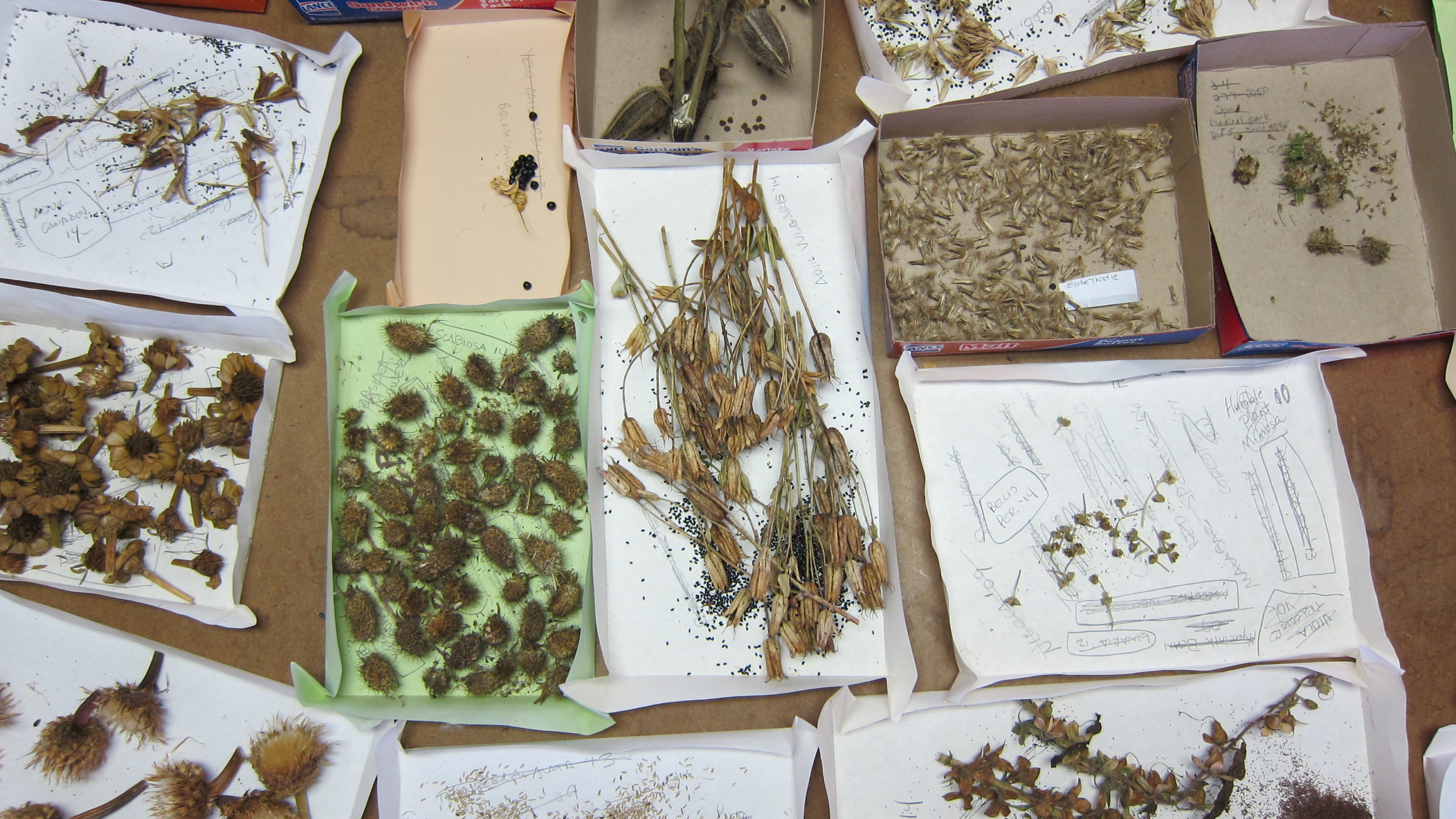Horticulture
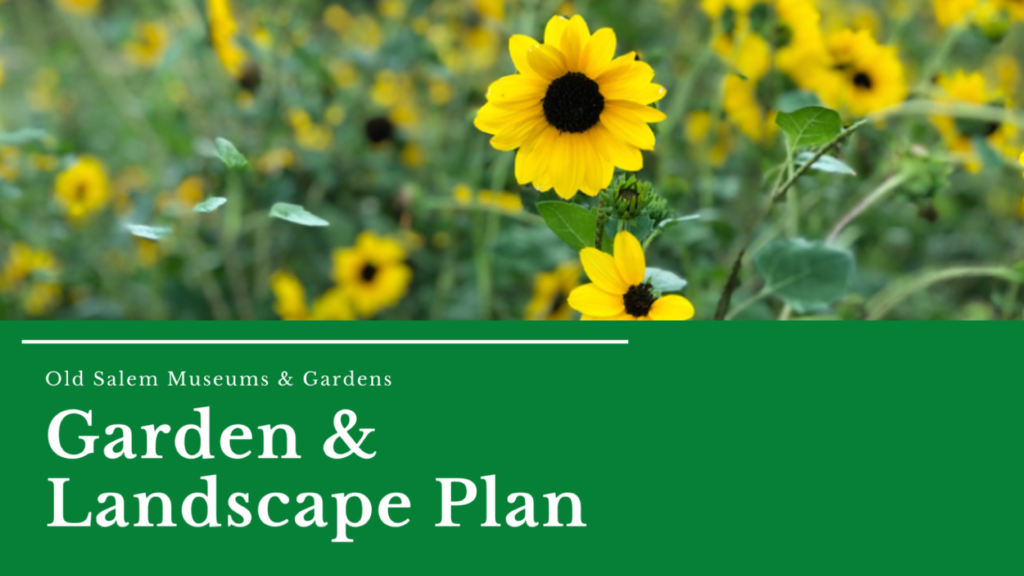
Old Salem Museums & Gardens Horticultural History
Gardens have been an essential part of life in Salem since the town was established in 1766. Salem was described by a Salisbury, North Carolina newspaper, The Carolina Watchman in 1845:
Its style and manners (are) very city-like and no place of the same size contains as many plants and flowers. In every window, yard, and garden you behold them and some of very beautiful and rare order. If a great fancy for flowers argues a corresponding taste for all that’s beautiful and lovely, then the people of Salem are unsurpassed.
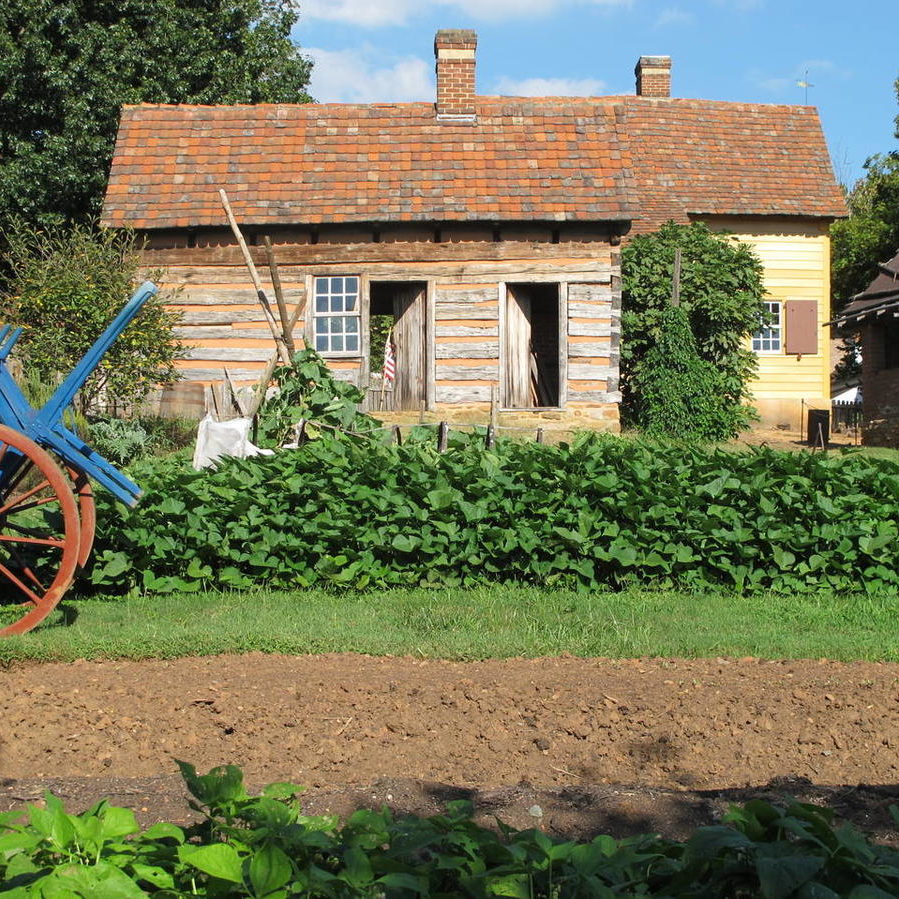
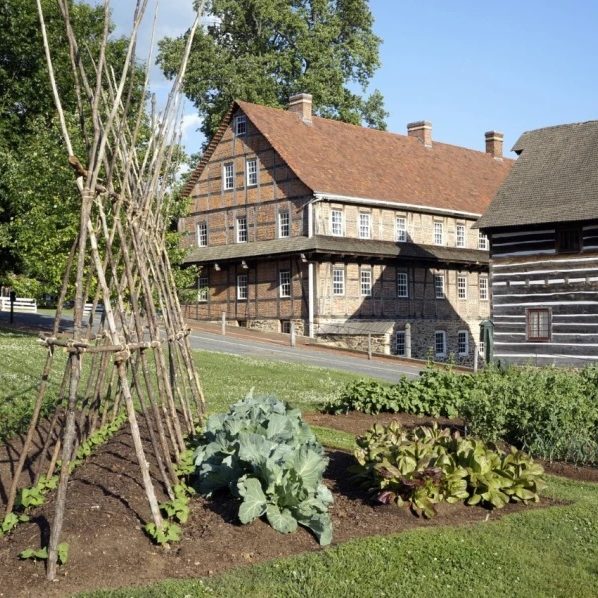
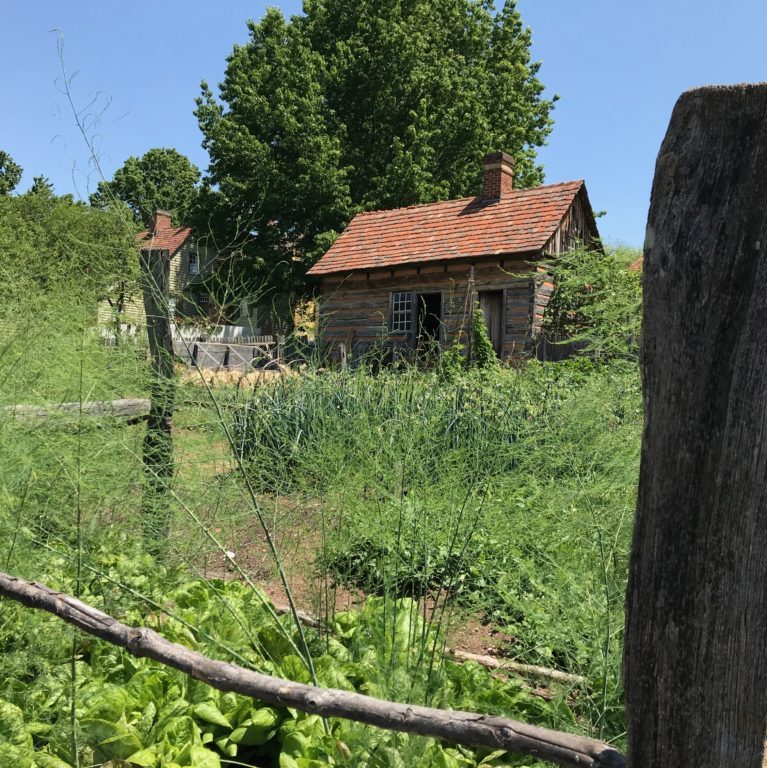
Garden History
The Moravians settled their North Carolina colony in the 1750s with a keen awareness of the need to understand and manage their environment. To their 100,000-acre Wachovia Tract, they brought a land stewardship ethic that included: resource identification; inventory and management; land use policies; and conservation practices (the Moravians appointed a forester in 1759, the first in America). The legacy of Moravian foresight in community planning can be appreciated today in Old Salem.
Salem, founded in 1766 as the central town of Wachovia, was the craft, trade and professional center to the surrounding Moravian farming congregations. Although Salem was not a farming community, each residential lot had a yard for household chores and a large garden area, all neatly fenced. The garden area was used intensively, with vegetables, herbs, and flowers planted together in the European style of garden squares divided by paths. Grapes might be along the fence and fruit trees at the rear.
The Moravians are excellent record keepers and from their diaries and journals, paintings and drawings, maps and photographs, we know much about what they grew, when and where. In addition, botanists were among Salem’s residents and recorded important inventories of local flora, collected specimens, and made contributions to the broad science.
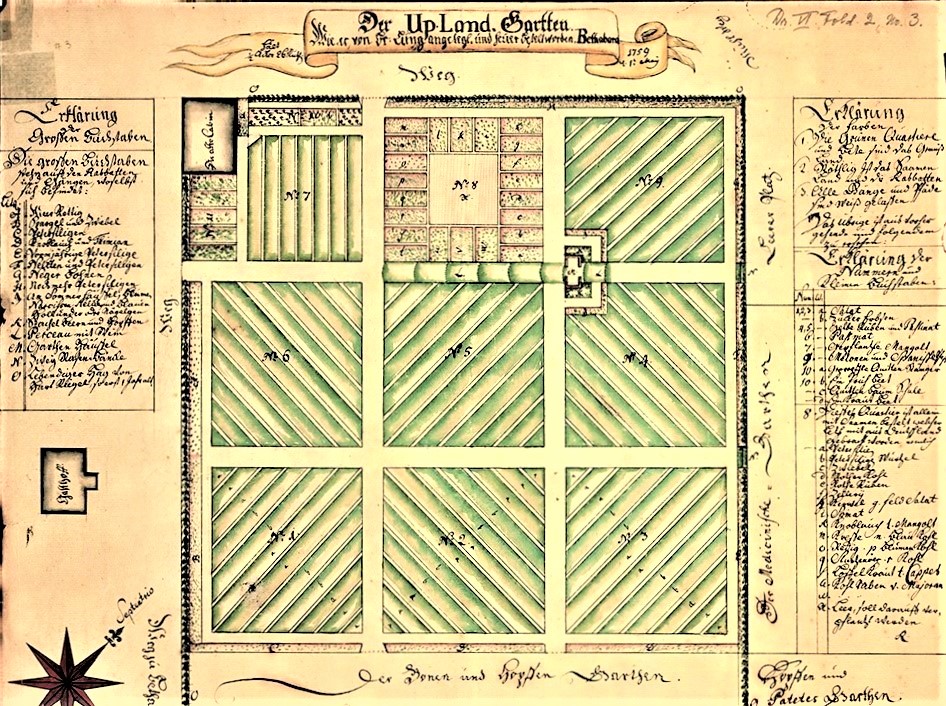
Landscape Restoration
With this rich body of documentation, the Horticulture Program at Old Salem has worked for more than forty years to create a landscape recalling early Salem. Native trees and shrubs have been reintroduced, historic fencing styles separate lots and meadows, and gardens are featured throughout the historic area. Stream reclamation has cleaned waterways, and with a mature tree canopy and passive land use in the historic area, habitat supports a variety of wildlife.
The Old Salem Horticulture Staff is committed to sustainable practices including “feeding the soil”, growing heirlooms, and seed saving. Staff researches and plans the gardens; composts and sows green manures for high soil fertility; and plants and maintains only those things believed to have been grown in Salem, or the area, before 1850. These open-pollinated heirlooms supply seed for the important seed saving program at Old Salem. Old Salem shares information with the public through garden & tree tours.
Single Brothers’ Garden
Historically, the Single Brothers’ Choir occupied nearly 700 acres that stretched to the west behind their house. In 1769, the Single Brothers’ Choir constructed and cultivated their kitchen garden laid out in large squares on earthen terraces that extended from their back yard down to the creek. In addition to garden squares for vegetables, they also maintained a tree nursery and orchard. This land included the garden, a spring house, stables, and their brewery/distillery and slaughterhouse, as well as fields, meadows and pastures that are seen in the foreground of the 1787 painting of Salem by Ludwig G. von Redeken, at left below. After the Single Brothers’ Choir disbanded in 1823, individuals began to rent garden squares in the old garden. The late 19th century photograph, at left of center below, is looking west across the garden. Note the earthen terraces.
Located to the rear of the Single Brothers’ House and Workshop, this kitchen garden historically fed the men and boys of the Single Brothers’ Choir who lived in the house, sometimes as many as sixty. The Single Sisters’ Choir, whose house is located diagonally across Salem Square from the Brothers’ House, cultivated similar extensive gardens east of the Square in the area that is now Salem College.
The Single Brothers’ Garden is an award-winning restoration made possible through the generous funding of The Garden Club Council of Winston-Salem and Forsyth County. It is the largest interpreted garden in Old Salem, right of center and right below. The Single Brothers’ Garden today is planted with examples of what the Brothers would have grown in their kitchen garden, as well as examples of their field crops. Depending on the season, the large terraced garden squares grow heirloom vegetables and grains, including maize, squash, field peas, broom corn, winter wheat, oats, lettuce, peas, turnips, beets, cabbage, salsify, okra, potatoes, melon, peanuts, beans, sweet potatoes, and buckwheat. Heirloom herbs are grown as well. Apple and cherry trees have been re-established at perimeters, and grapes and gourds grow along the fence.
Miksch Garden
The Miksch Garden and House displays the garden in its central role in the early Moravian household. Living history demonstrates early gardening practices in Salem with seasonal needs to guide daily activity.
Matthew Miksch was trained as a gardener in 18th-century Europe and brought many Old World traditions when he immigrated to America in 1754. Although a gardener by trade, Br. Miksch dabbled in a variety of work that included tobacco, fruit trees, seeds, candles and gingerbread, with the assistance of his wife Henrietta.
The Miksch House (1771) was the first privately owned home in Salem, and the Miksch Garden today is planted with an array of vegetables the family would have needed. Apple and pear trees are espaliered along fences with peach trees at lot edges, and border beds are planted with a variety of herbs and flowers, inspired by the 1761 list of Hortus Medieus, the Medical Garden in Bethabara, the first Moravian settlement in Wachovia. This early plant list and plan provide detailed information about medicinal and culinary herbs favored by the Moravians.
At the interactive Miksch Garden and House experience, costumed interpreters are cooking and preserving food from the garden. The cycle of the seasons provides the daily routine, weather time for planting, harvesting, preserving or planning.
Visitors, especially children, are invited to actively enjoy the heirloom garden from the fragrance of herbs to the shapes and colors of heirloom vegetables, fruits and flowers.
The beauty, utility and practicality of this planned Moravian town are showcased in this family garden, where its “backyard” size is an inspiration for home gardeners today.
Family Gardens of Salt Street
- Family Gardens and Orchard Lot
The recreated gardens along Salt Street reflect what is believed to have been the styles and plant materials common in the backyard gardens of Salem prior to 1850. The date of each garden generally corresponds to the restoration date of the house it accompanies. and the vegetables, herbs, flowers and fruits in the gardens are open-pollinated heirlooms from which seed is saved.
Although Salem was not a farming community, each residence had a yard for household chores and a large garden area, all neatly fenced. Residential lots were typically 66′ by 200′ and used intensively. Vegetables, herbs and flowers were planted together in the European style of garden squares divided by paths. Grapes might be along the fence and fruit trees at the rear. Due to Salem’s sloping terrain, earthen or stone terracing was often used to create level areas for garden squares.
- Cape Fear Bank Garden
The Cape Fear Bank Garden served the banker and his family, who lived in the bank building. Planted as it might have appeared ca. 1845, this is the latest interpreted garden in Old Salem. By the mid-19th century, changes in the community and increased sourcing of vegetables from nearby farms allowed for increased garden space devoted to ornamentals. In this garden, transition in cultivation techniques can be seen, with less emphasis on vegetable production and more on flowers.
- Leinbach Garden
John Henry Leinbach, a shoemaker, cultivated his garden and also kept bees, a milk cow and sometimes a pig. He also leased an outlot beyond town for a variety of field crops, often sending his apprentices there to work that land. An eager outdoorsman, Br. Leinbach enjoyed hunting and fishing, and his detailed journal from 1830-1843 provides rich information about his activities and the management of his garden and outlot. This documentation is a basis for the Leinbach Garden today. Rose bushes here date to one Mrs. Leinbach planted in 1823.
- Levering Garden
The ca. 1820 Levering Garden is smaller in size than many of the other gardens in Salem and offers a wonderful mix of beauty and function. Vegetables and flowers present a striking display, with the blooming of the tree peony anticipated each spring. Terraces here were laid out following the recollections of an older man who had lived in the house as a boy and whose job it was to keep the rocks straight! The grape arbor on the middle terrace is planted with muscadine grapes.
- Fruit Orchards
Along Salt Street and throughout the restored landscape fruit orchards are featured. These orchards are planted with a wide variety of heirloom apples, cherries, peaches, crabapples and pears. The orchards demonstrate the constant cultivation of fruit trees throughout the town. Vacant lots in Salem were frequently used as orchards until they were needed for building purposes. Today, fruits are gathered for use in the many receipts (recipes) that costumed interpreters follow to prepare 18th and 19th-century fruit specialties.

